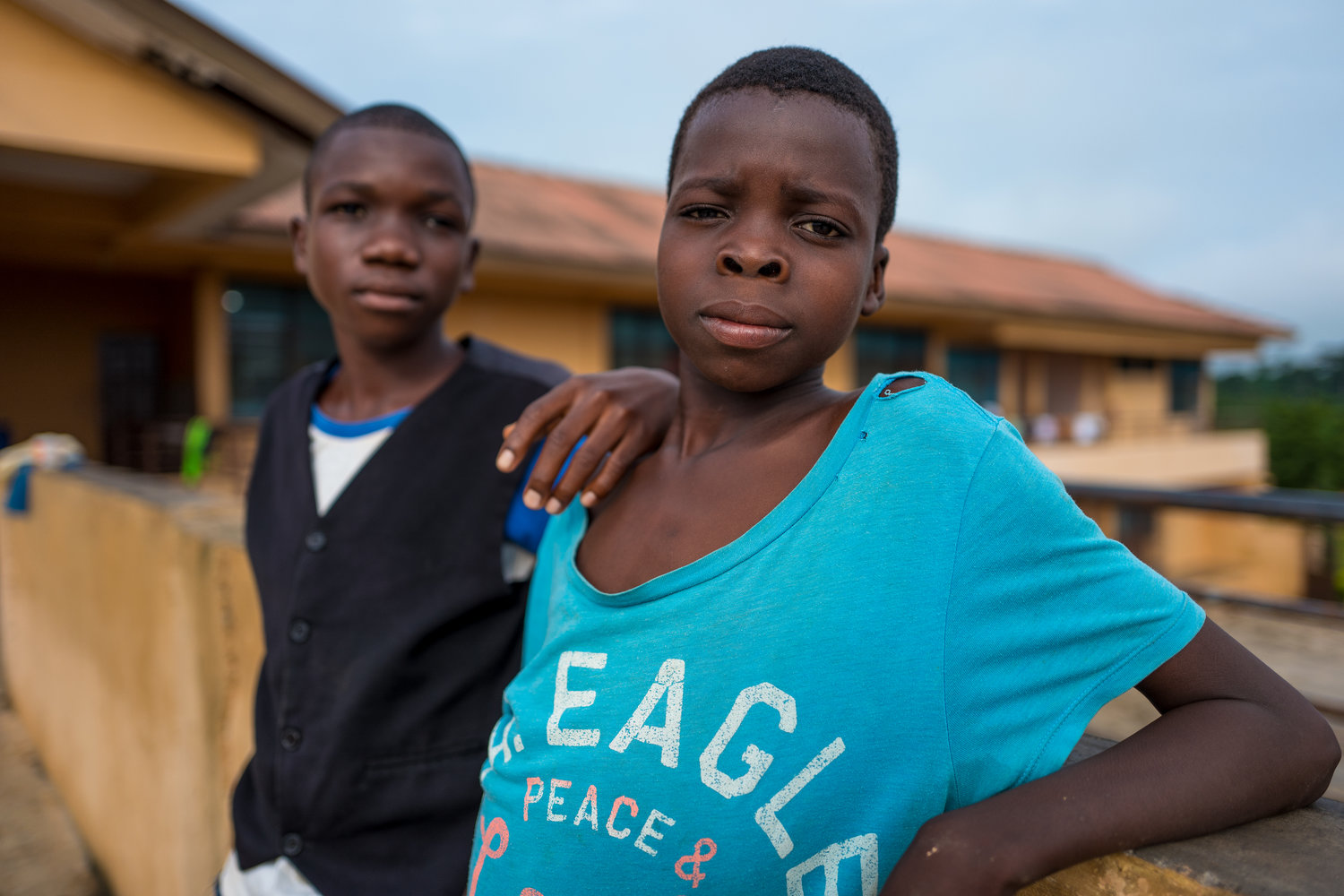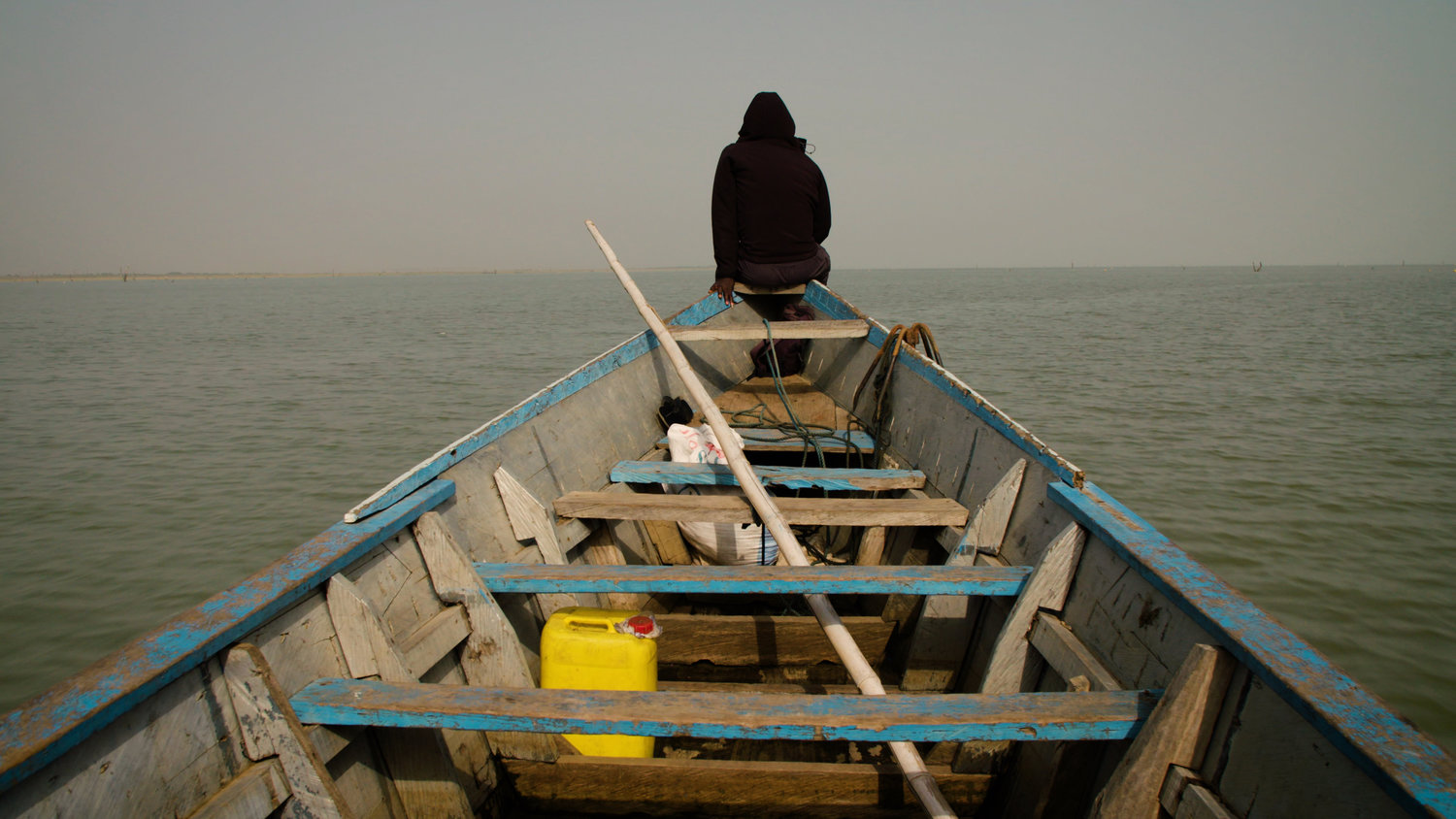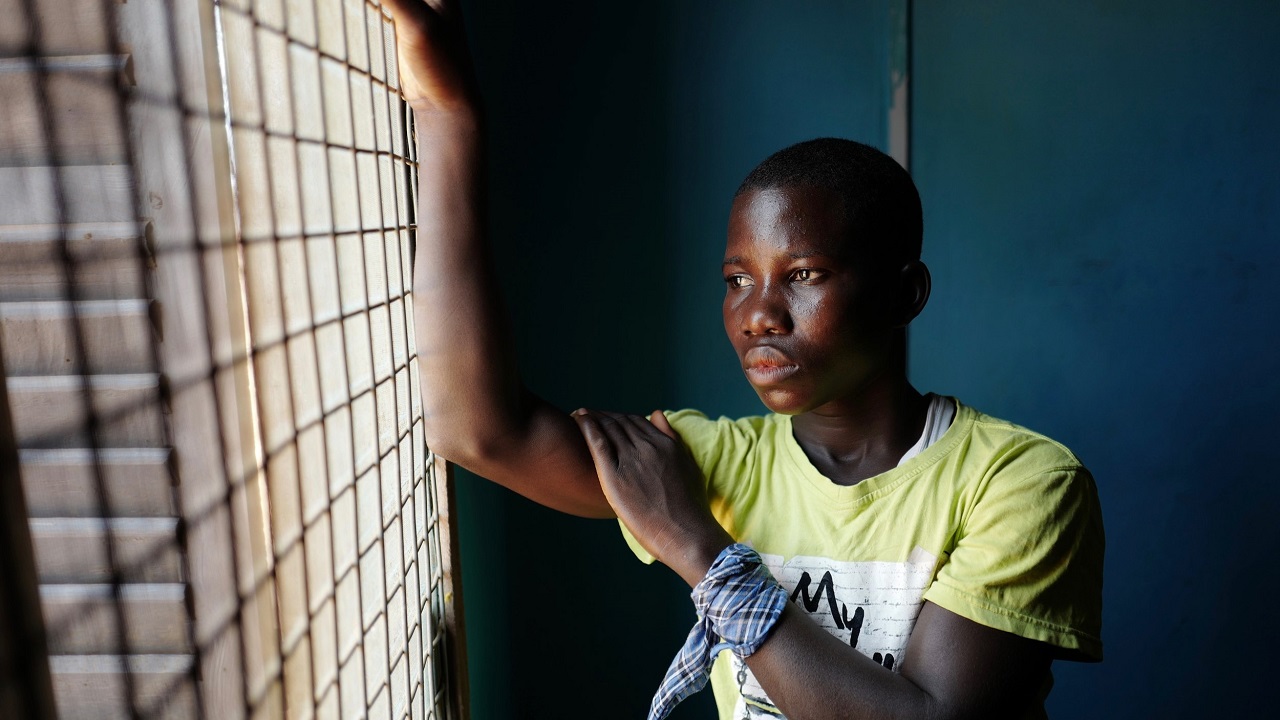Lake Volta, formed when the massive Akosombo Dam was completed in 1965, covers nearly 4% of Ghana. With a surface area over 3,000 square miles (that’s 13 Lake Meads!), it’s one of the biggest man-made lakes in the world and, as photographed in Alyssa Fedele and Zachary Fink‘s compelling documentary The Rescue List, surely one of the most beautiful. It’s also the site of rampant child slavery.
This dark subject is treated with a surprising matter-of-factness in The Rescue List, which is not to say it’s taken lightly. Avoiding the incendiary or reductive, Fedele and Fink examine the ways this immoral institution is interwoven with the fabric of everyday life for local villages. It’s an approach that mirrors the almost non-judgmental or at least deeply pragmatic attitude of Stephen Kwame Addo, a former child slave who spearheads an effort by an NGO called Challenging Heights to rescue as many of the kids as they can, stabilize and educate them, and reunite them, when possible, with caretakers who have their best interests in mind, filling a gap the Ghanian government is unable or unwilling to address itself.
 The focus is less the beatings suffered and deadly dangers faced by the children — mostly recounted in heartbreaking asides, all the more painful because of the youthful innocence and shrugs hiding unimaginable hurt — then the friendships that sustain them in horrific circumstances. Poetic and lavish images of sunsets on the water alternate with memories of brutality and with the story of 17-year-old Peter, awaiting the removal from bondage of his missing friend. We also trail Kwame, verite-style, on rescue missions by boat across the vast expanse.
The focus is less the beatings suffered and deadly dangers faced by the children — mostly recounted in heartbreaking asides, all the more painful because of the youthful innocence and shrugs hiding unimaginable hurt — then the friendships that sustain them in horrific circumstances. Poetic and lavish images of sunsets on the water alternate with memories of brutality and with the story of 17-year-old Peter, awaiting the removal from bondage of his missing friend. We also trail Kwame, verite-style, on rescue missions by boat across the vast expanse.
This approach has plenty of merits, some of them curious; for one thing, The Rescue List is a child slavery movie suitable for children, which has to be something of a boon for educators looking to address the issue. Its emphasis on the org’s pragmatism — scenes of Kwame patiently waiting, talking the situations over with village elders, holding off as long as possible on threats of police intervention to allow the village to do the right thing — are culturally specific and fascinating. Kwame is eternally patient, though you can see the outrage of a former child slave animating his passion.
But he plays by the local rules, appeals to better angels, and seems to understand the position some of these others are in — from a certain vantage point, he is simply disrupting their workforce. After all, few of the children seem to have been taken by force; their families sold their labor, fair and square. They’re housed and fed, which may or may not be better than the situations they knew before. All of this is heinous, but it’s not any harder to understand, in and of itself, than other objectionable capitalist arrangements. The point, from where Kwame and The Rescue List are sitting, is to get the kids back, and Challenging Heights has decided the best way to do so is to allow village elders to feel they’ve elected to do the right thing.
 But there’s a structural limit to the film’s perspective. For one thing, it would’ve helped The Rescue List, and our understanding of the situation, to spend more time with the parents. We get a bare sense of why they would do it — poverty — but never get to delve deep into psychological or social ramifications in home villages (with small exception at end). We are talking about selling your own children here; the film’s otherwise admirable matter-of-factness obscures the gravity of this act. Fedele and Fink also opt to steer clear of any real examination of the government’s role, or the mining companies that created the conditions for slavery to flourish, or the colonialism that created the condition for the mining companies. We are routinely submerged, in media res, and experience first-hand what it’s like to confront these injustices, but we never get a full grasp on how or why they came to be.
But there’s a structural limit to the film’s perspective. For one thing, it would’ve helped The Rescue List, and our understanding of the situation, to spend more time with the parents. We get a bare sense of why they would do it — poverty — but never get to delve deep into psychological or social ramifications in home villages (with small exception at end). We are talking about selling your own children here; the film’s otherwise admirable matter-of-factness obscures the gravity of this act. Fedele and Fink also opt to steer clear of any real examination of the government’s role, or the mining companies that created the conditions for slavery to flourish, or the colonialism that created the condition for the mining companies. We are routinely submerged, in media res, and experience first-hand what it’s like to confront these injustices, but we never get a full grasp on how or why they came to be.
Still, there’s enough to recommend The Rescue List on its own terms, and the quiet, committed heroics of Kwame and his crew speak for themselves. Fred Rogers, the focus of several other recent documentaries, urged us to “look for the helpers” in even the most dire situations. The Rescue List ably finds some of them, patiently crossing names off the ledger, hidden in shadows alongside one of the most picaresque lakes in the world.

